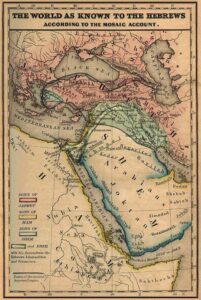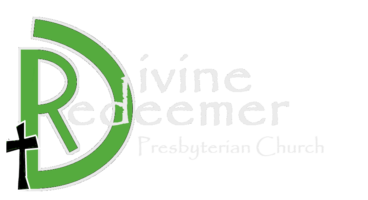
Racial Justice Part 1
We continue our exploration of the biblical injunctions to Mishpat—legal/court justice and Tzedekah—Social righteousness that occurs as we embody the principle of Mishpat within our lives as a society in order to make it REAL within our communities.
Over the last few weeks we have examined how these concepts function within the matter of Gender Justice and Economic Justice, and today I will offer the first installment addressing Racial Justice.
Martin Luther King Jr. wrote:
“The church must be reminded that is not the master or the servant of the state, but rather the conscience of the state. It must be the guide and the critic of the state, and never its tool. If the church does not recapture its prophetic zeal, it will become an irrelevant social club without moral or spiritual authority. If the church does not participate actively in the struggle for peace and for economic and racial justice, it will forfeit the loyalty of the millions and cause people everywhere to say it has atrophied its will. But if the church will free itself from the shackles of a deadening status quo, and, recovering its great historic mission, will speak and act fearlessly and insistently in terms of justice and peace, it will enkindle the imagination of humankind and fire souls, imbuing them with a glowing and ardent love for truth, justice and peace. Men and women far and near will know the church as a great fellowship of love that provides light and bread for lonely travelers at midnight.
– The Church’s Role from A Knock at Midnight by Martin Luther King, 1967
My own mentor Father Jose Marins taught that the church is the compass not the pilot of humanity. Our role is to point toward the destination we understand God is directing history…the Kingdom…or Kin-dom, or Beloved Community as MLK put it. Our role as a people and as an institution is to stand in constant critique of the society within which we live and challenge it in every generation to become better after the way of Jesus. In Barak Obama’s paraphrase of the Constitution, “to perfect the union” that we have inherited.
But what happens when the church loses its way? What happens when instead of being a compass pointing north toward Liberation and Equality before God and one another, we start to point South toward Oppression and Discrimination. What happens when we use our role to reinforce the power of the few over the many, baptizing such oppression with the holy water of religious legitimacy?
Two Sunday’s ago, at a city -wide prayer event called Pray SA, pastor and author Max Lucado stood before a racially diverse crowd of Christians in the parking lot of the Freeman Coliseum and confessed:
“I am sorry that I have been silent. I am sorry that my head has been buried in the sand. My brothers and sisters are hurting and I am sorry. I have made them to feel less than. I did not help. I did not hear. I did not see. I did not understand.”
In truth, enormous numbers of pastors could speak the same words. As has often been noted, Sunday morning 11 am the most segregated hour in America. How did it get that way? It was no Accident…it was because of deliberate, intentional, and misguided decisions to reinforce the structures and systems of this nation, which were established to create a Caste system that rewarded some with access, property, dignity, decision making power, privileged opportunity and freedom, while stripping a second class of persons of these same things.
In her recent best-selling book Caste, the Origins of our Discontent, author Isabel Wilkerson uses the metaphor of having inherited an older home to describe the situation we are in today. She did not build it; the structural foundation issues were not of her making. The roof leak that had, over time, created rotted timber that now resulted in a sagging, stained ceiling, was not her doing. But now the house was hers. Now she had some decisions to make about how much time and money and effort she would put into addressing these inherited structural issues.
We have inherited this nation’s structures, many of them intentionally built to systematically discriminate against certain people while elevating and celebrating others. This system is called a Caste System, and ours is not the only one that has existed. But it has governed the way in which we live in American society for over 400 years. We are now the inheritors of this flawed structure. And we now have some decisions to make about how much time, money and effort we will spend on our generation to address these flaws so we can pass this home down to our children in perhaps a little better shape than we inherited it.
Wilkerson seeks to uncover what the common elements of a Caste System are by examining three of the most devastating caste systems that have ever been created. India’s system of 5 Castes with all tier sub-castes, the caste system of Nazi Germany, and the American Caste System. Over the next weeks we will be looking at the eight structural elements that form the Caste System. All three of the Caste systems she examines exhibit these 8 characteristic features. I will also be exploring how these eight pillars of caste are present within the biblical world, and how Jesus, in his person and in his ministry exposed and exploded these pillars in the interest of God’s greater love.
Caste vs. Race
An initial distinction that needs to be made is the distinction between Caste and Race. Both are social constructs. They are created by societies to establish a differentiation between certain groups of human beings. Caste refers to the deep, often invisible and assumed norms that are so deeply imbedded as to be often imperceivable, as water to the fish that swim in it. A Caste System is the unquestioned norms that establish one person as greater than and another person as less than in myriad ways.
Race is the particular artificial construct that is utilized to identify which persons fall in one caste and which fall into another. In the US that identifying characteristic is referred to as Race. But skin color is a problematic category to use as we shall see. It could have been eye color, brown and blue. Or height, tall and short. The problem with all of these physically observable traits is that they exist on a wide spectrum. Are hazel eyes brown or blue? Are green eyes brown or blue? What defines tall vs. short? When I am in Guatemala, I appear to be a giant. When I stand net to my wife’s children, all over 6 ft tall, I am a shrimp!

Every Caste system requires some form of legitimation. Wilkerson argues that the 8 pillars of caste are the common ways in which a system of intentional discrimination acquires its power to define reality for a society.
Pillar #1:
Divine Will and the Laws of Nature
In India, the ancient holy texts tell the story of Rama, one of the lead Gods in the Hindu pantheon, laying out the structure for the four principle castes, with the 5th and bottom most rung simply referred to as the Dalit or the Untouchables. Similar to the way in which Western Cultures identified the ‘Divine Right of Kings (and Queens) this ‘divinely ordained’ order for the world was simply and unquestionably set by order of heaven and all of Indian society came to embrace it. Furthermore, the laws of Karma dictated that the only way to rise in caste was to dutifully fulfill ones’ place in the caste they were given in this life. This effectively reduced any impulses to get ‘uppity’ and attempt to move beyond your class.
In the Western World, Christianity held sway and there were similar texts utilized to justify the ruling caste (royalty). God’s selection of King David and the embrace of his monarchy in the Old Testament was used, as well as Paul’s argument to submit to ‘governing authorities’ in Romans 13:1-7 to provide the religious justification for a ruling class. Martin Luther argued from Romans 13 to justify the brutal and bloody suppression of a peasant uprising in Germany.
The justification for a slave class came from our bible as well. Two texts in particular: Genesis 9:20-27 and Leviticus 25: 44-46. The first text is the story of Noah and his sons just after the flood:
Noah and His Sons
18 The sons of Noah who went out of the ark were Shem, Ham, and Japheth. Ham was the father of Canaan. 19 These three were the sons of Noah; and from these the whole earth was peopled.
20 Noah, a man of the soil, was the first to plant a vineyard. 21 He drank some of the wine and became drunk, and he lay uncovered in his tent. 22 And Ham, the father of Canaan, saw the nakedness of his father, and told his two brothers outside. 23 Then Shem and Japheth took a garment, laid it on both their shoulders, and walked backward and covered the nakedness of their father; their faces were turned away, and they did not see their father’s nakedness. 24 When Noah awoke from his wine and knew what his youngest son had done to him, 25 he said,
“Cursed be Canaan;
lowest of slaves shall he be to his brothers.”
26 He also said,
“Blessed by the Lord my God be Shem;
and let Canaan be his slave.
27 May God make space for Japheth,
and let him live in the tents of Shem;
and let Canaan be his slave.”

The second text is the passage from Leviticus 25, which gives divine permission for the Israelites to enslave the infidel peoples of the land they are conquering but to refrain from taking members of their own community into slavery. Those enslaved are to be property which is passed on to the children of the slave holder:
44 As for the male and female slaves whom you may have, it is from the nations around you that you may acquire male and female slaves. 45 You may also acquire them from among the aliens residing with you, and from their families that are with you, who have been born in your land; and they may be your property. 46 You may keep them as a possession for your children after you, for them to inherit as property. These you may treat as slaves, but as for your fellow Israelites, no one shall rule over the other with harshness.
Consequently, when Portuguese Catholic Christian explorers arrive in Africa and observe the dark-skinned peoples, who do not believe in their God, they immediately identify them as the descendants of Ham and thus divinely ordained to be the perpetual slaves of the other European peoples and their property. This biblical justification survives as the religious justification for the 500+ years of the African slave trade. The Church had lost its way. Instead of being the conscience of the state, we had become the servant of the state, baptizing the incredibly lucrative slave trade at the cost of our soul and the lives of countless African lives. We had stopped being a reliable compass, instead of pointing to a consistent ‘north’ to the liberation and equality the Christ brought, our needle spun and wobbled to assist in the creation of the slave trade, the American slavery experience and its caste system, and then the Nazi doctrine of Aryan Superiority and the caste structure beneath it.
Slavery was practiced in America from its inception: 1619-1865, for 246 years. Longer than the time we have even been a nation. The American form of slavery was particularly brutal, allowing by law for the enslaving of people and their progeny for 12 generations. As property, ANYTHING, could be done to a slave with impunity. The law protected the benefactors of slavery, not the victims for the duration of those 12 generations and beyond into the years of Jim Crow laws in the South. On the back of these slave’s lives, the slavers and their nations became some of the wealthiest the world has known.
What other biblical guidance is there? Is there anything in the life and teachings of Christ that we can hold onto to assist us in recovering our conscience as a church? Is there a way to find ‘true north’ again in the midst of this American Caste System? As we work through the 8 Pillars of Caste Systems, I will attempt to show how dimensions of a caste system were still present biblical times and how Jesus responded to them, often ignoring, sometimes deliberately breaking, and at times denouncing the invisible ‘truths’ that his society and religious community held in order to justify the oppression of the many by the few.
Regarding the first pillar, Divine Will and Natural Law, I would call attention to two stories: The healing of a Centurion’s servant and the healing of a Syrophoenician woman’s child. Both point to a Christ who disregarded Caste in the interest of wholeness.
Jesus Heals a Centurion’s Servant
5 When he entered Capernaum, a centurion came to him, appealing to him 6 and saying, “Lord, my servant is lying at home paralyzed, in terrible distress.” 7 And he said to him, “I will come and cure him.” 8 The centurion answered, “Lord, I am not worthy to have you come under my roof; but only speak the word, and my servant will be healed. 9 For I also am a man under authority, with soldiers under me; and I say to one, ‘Go,’ and he goes, and to another, ‘Come,’ and he comes, and to my slave, ‘Do this,’ and the slave does it.” 10 When Jesus heard him, he was amazed and said to those who followed him, “Truly I tell you, in no one[d] in Israel have I found such faith. 11 I tell you, many will come from east and west and will eat with Abraham and Isaac and Jacob in the kingdom of heaven, 12 while the heirs of the kingdom will be thrown into the outer darkness, where there will be weeping and gnashing of teeth.” 13 And to the centurion Jesus said, “Go; let it be done for you according to your faith.” And the servant was healed in that hour.
The Syrophoenician Woman’s Faith
24 From there he set out and went away to the region of Tyre.[g] He entered a house and did not want anyone to know he was there. Yet he could not escape notice, 25 but a woman whose little daughter had an unclean spirit immediately heard about him, and she came and bowed down at his feet. 26 Now the woman was a Gentile, of Syrophoenician origin. She begged him to cast the demon out of her daughter. 27 He said to her, “Let the children be fed first, for it is not fair to take the children’s food and throw it to the dogs.” 28 But she answered him, “Sir,[h] even the dogs under the table eat the children’s crumbs.” 29 Then he said to her, “For saying that, you may go—the demon has left your daughter.” 30 So she went home, found the child lying on the bed, and the demon gone.
The social context for both of these passages is the sharp distinction that Jews made between themselves and the goim or Gentile nations, those who didn’t share their ethnic identity or their faith on the basis of their understanding of the Divine Will that they were the “chosen people of God.” Interchange with these others was a form of contamination. For the Romans it was even worse. Rome was the oppressor of their people and the centurion was a visible example of that oppression. The Syrophoenician woman clearly understands her position in the caste system…she is a ‘dog who at least deserves the crumbs from the table.’ Yet in both cases Jesus sees them as human, even exclaiming that the Roman is an example of greater faith than he has found in all of Israel! And Jesus allows the foreign woman to show him his own error in judgement, convincing Jesus that his mission is not simply to the children of Israel but beyond. He sees her for the person she is and is even willing to learn from her.
I find these two texts to reveal a NEW way beyond the caste system that assigns persons greater and lesser value. In the Christ we discover that even the Son of God can learn from a foreign woman, can find faith in a Roman oppressor and on the night of his betrayal to death, can even kneel to wash the feet of a dirty fisherman.
If we as the Body of Christ are to be the compass, the conscience of the state…our state, ANY state or government, then we cannot continue to uphold doctrines that claim it is God’s design to make some persons greater than and other persons less than.
